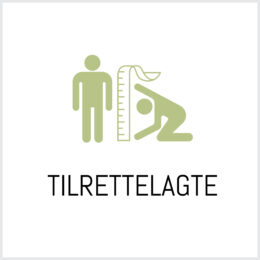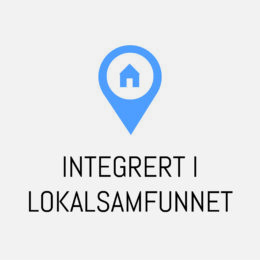
More about Rescaled
In surveys of living conditions in Norwegian prisons, small prisons often come out best. Research shows that the criminal law principles of normality, proximity and appropriately adapted security levels are easier to safeguard in small prisons.
In a smaller environment, people get closer to each other. Building close relationships between staff and inmates is important for creating a trust-based environment, ensuring that inmates get the help they need and providing a better starting point for follow-up leading up to release.
Research and experience indicate that relationships in smaller prisons are closer, and the path to decision-making is shorter. It can lead to fewer misunderstandings and frustrations in prison.

Facilitated… This means that we want prisons to adapt to each inmate’s abilities, needs and circumstances, and that no inmates serve under stricter security levels than necessary.
Facilitating the individual’s is of great importance for building self-confidence, preparing for release and developing as a person. Facilitation must take place in two ways: to atone at the right level of security and to facilitate the individual’s situation.
Although it is a principle in Norway that no one should atone at a higher level of security than necessary, this is not always the case in practice. Reduced capacity in open prisons means that more people have to serve time in high-security prisons. Not only do high-security prison places cost substantially more than in open prisons, but the likelihood of incurring prison injuries increases with the level of security. If everyone zones at the right level of security, we save society unnecessary costs and inmates from unnecessary institutional damage.
At the same time, we know that no two inmates are alike. Young first-time offenders have different needs than older regulars or addicts. The prison’s education and employment, health services and activities must reflect who is serving time there. Smaller and adapted units can be adapted to each prisoner to a greater extent, giving them the help they need on their way out of crime.

Integrated into the local community… That is, we want you to be able to continue to be a part of society even if you serve time.
A small prison cannot provide all community services, nor should it. Inmates in an integrated prison, close to local communities, make use of functions outside the prison on an equal footing with others. It can be crucial to have established contact with the services one needs for life after imprisonment well before release.
In Norway, you are deprived of your liberty by judgment, but you must not be cut off from society for that reason. Yet we know this is often the result. The more you lose your connection to life outside the walls, the longer the road back will be. That’s why we want prisons that enable inmates to interact, offer services and provide a resource in the local community around them.
Several small prisons around the country can safeguard inmates’ right to normality in everyday life and facilitate proximity to family, networks and hometown.


